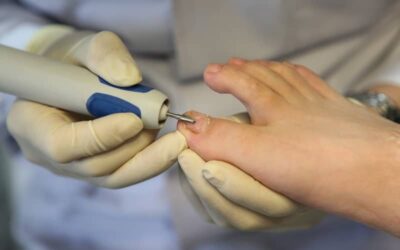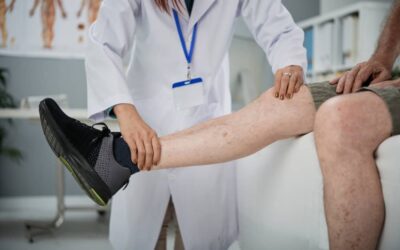If the Shawty in the apple bottom jeans that Flo Rida was singing about hit the floor with her heel inverted, it would explain why she got low, low, low, low, low, low, low, low. She probably sprained her ankle and fell to the ground. Like the song, her sprain is most likely low, low, low. But how could she tell? Let’s learn together the unique symptoms of low and high ankle sprains what that means for you.
The Lowdown on Low Ankle Sprains
A low ankle sprain is the most common form of ankle sprain, making up 90% of all ankle ligament injuries. This type of sprain happens when ankles roll. When the heel inverts under the foot, the twist stretches or pulls the ligaments, causing a sprain.
The sprain may be low, but the pain can be high. Low ankle sprains are typically stiff, swollen, tender, and painful when bearing weight.
It’s Me, High, I’m the Problem, It’s Me
High ankle sprains occur most commonly among football players of all levels. A combination of flexible cleats and artificial turf creates an environment where ankles can be forcibly turned outward during a hit, resulting in injury to the higher ankle ligaments between the tibia and fibula.
Stretching or tearing these ligaments is a more serious injury than a low ankle sprain. The recovery time can be double.
How to Treat an Ankle Sprain
Although both injuries are considered ankle sprains, they are not treated entirely the same. Initially, the RICE method (rest, ice, compression, and elevation) is helpful for both. Over-the-counter anti-inflammatory medications can help, too.
- Low ankle sprains: A low ankle sprain can start healing with a brace. If the ankle responds well, it can graduate to physical therapy. If the ankle is still extremely painful after wearing a brace, a boot may be necessary.
-
High ankle sprains: Any high ankle sprain patient will be put in a boot immediately. Patients will need to wear the boot for a few weeks at a minimum. A podiatrist or physical therapist should monitor each high ankle sprain individually. There are three possible treatment paths for a high ankle sprain:
- A few weeks in the boot will be plenty to start rehabilitating the ankle.
- A few extra weeks in the boot are required.
- After extra weeks in the boot are unsuccessful, surgery might become necessary.
Ideally, an ankle will heal on its own without surgery, but it is not always possible soon after the sprain occurs to determine how the ankle will heal.
After the Boot
Both high and low ankle sprains will require some strengthening and range of motion exercises after they are no longer in a boot or brace. These exercises will also focus on proprioception to help prevent ankle sprains in the future. Proprioception is the function that occurs between the mind and the body to quickly respond to movements, or essentially your reaction time.
These exercises may include:
- The ABCs – Elevate your ankle and then write the ABCs in the air with your toe. This gets your ankle moving in all directions.
- Balance – Work up to balancing on your injured ankle. Start by standing on just the injured foot for as long as you can while you hold onto something for balance. Work up to 60 seconds. Then, work up to 60 seconds without holding onto anything. Once you’ve mastered those feats, try balancing on your injured foot with your eyes closed while holding a doorway or chair. Finally, work up to balancing for 60 unassisted seconds with your eyes closed.
- Flat-footed Stretch 1 – While sitting down and with your feet flat on the ground, move your knee slowly from side to side for a few minutes.
- Flat-footed Stretch 2 – In the same position as before, but with your feet together, use your injured foot to press inward toward your other foot. Hold it there for a few seconds, and then release it.
- Towel stretches – Sit on the ground with a towel in front of you. Put your sprained foot on the towel. Scrunch your toes to bring the towel toward you. Once you have it, use your toes to push it away. If that exercise is too simple, you can try adding weight on top of the towel.
Your ankle specialist will be able to help you with your specific ankle needs.
We can only hope Flo Rida was able to help Shawty get to a foot and ankle clinic in a timely manner and that her medical boot wasn’t needed long so she could go back to her own fur-lined boots soon.



